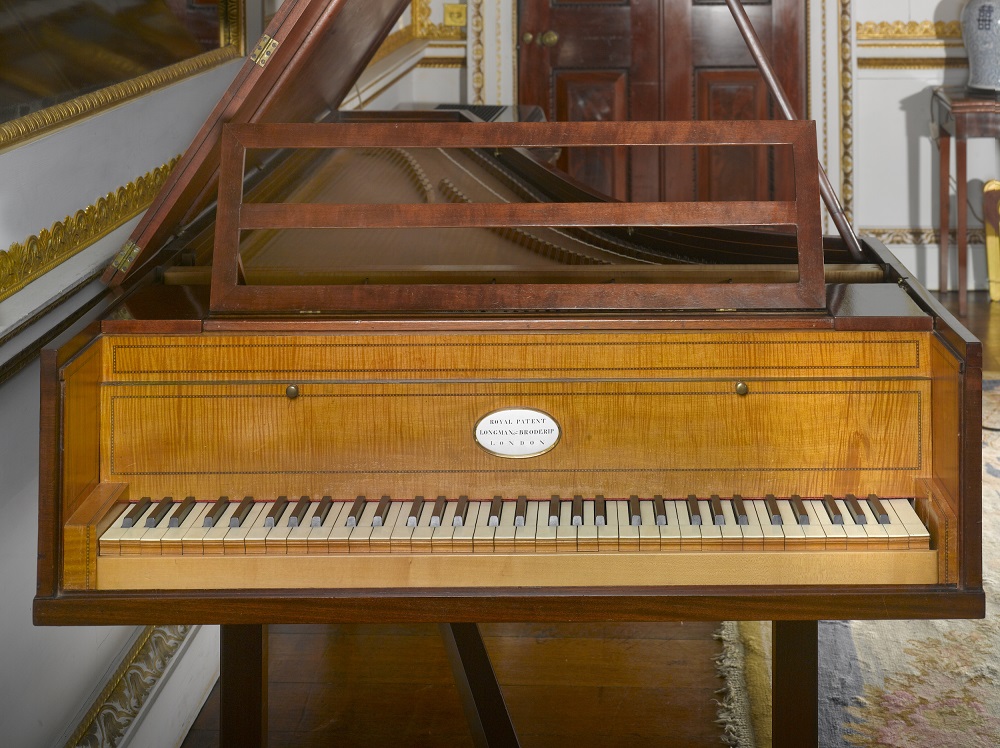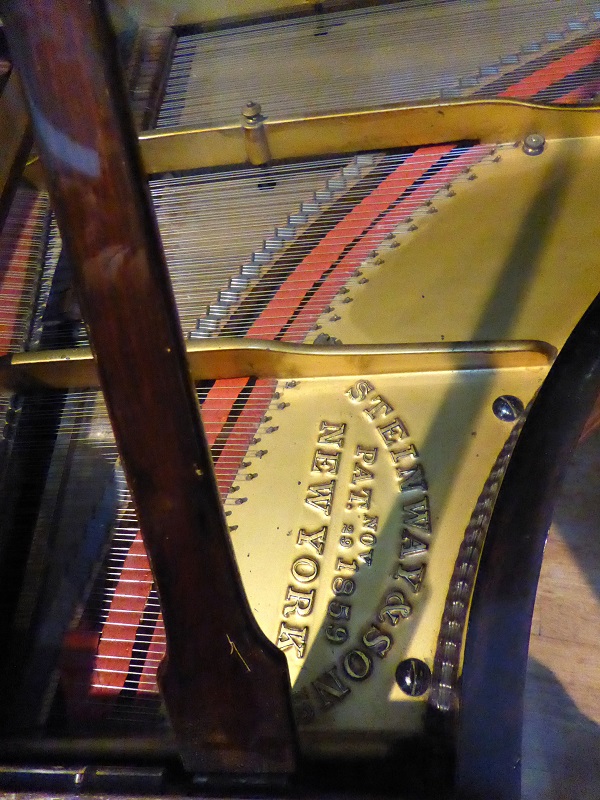What pianist wouldn't long to lay fingers on keyboards impregnated, as Roman Rabinovich put it in his introduction yesterday afternoon, with the DNAs of Haydn and Chopin? To take three of the 31 instruments in the astonishing Cobbe Collection at Hatchlands, Surrey - scattered throughout rooms with an equally breathtaking collection of pictures, including a late Titian masterpiece - have them placed them side by side in the neo-Wrenesque concert room added in 1903 to the rest of the 18th century building with its fine early Robert Adam ceilings, and make a totally satisfying programme in moving between each was Rabinovich's test, and he passed with flying colours.
Maybe it would have been less impressive if the instruments weren't in such superb nick. Alec Cobbe, who assembled the collection and who as occupant from 1985 has transformed what was an empty shell when the National Trust took it over, has charitable support from Donald and Jeanne Kahn to keep everything in perfect working order. First up was the Longman & Broderip five-and-a-half-octave grand of 1794-5 (pictured below), previously owned by Haydn/Mozart scholar supreme H C Robbins Landon, coming with a very strong case of being the instrument Haydn took back to Vienna from London. As Rabinovich later pointed out, Haydn lived through changes to the keyboard as radical as the advent of the internet. He wrought a rainbow of sounds from it in Haydn's G major Sonata, Hob. XVI: 39: alongside the expected spring and perfect trilling, with re-fingering having been worked out to counter keys narrower than we're used to on modern instruments, it was startling to hear a welter of what came across as janissary-band wildness in the first-movement development - there are, incidentally, drum, bell and cymbal facilities in King George IV's Streicher grand of 1823 in the collection - and a rich, powerful bass in a rising line during the slow movement.
He wrought a rainbow of sounds from it in Haydn's G major Sonata, Hob. XVI: 39: alongside the expected spring and perfect trilling, with re-fingering having been worked out to counter keys narrower than we're used to on modern instruments, it was startling to hear a welter of what came across as janissary-band wildness in the first-movement development - there are, incidentally, drum, bell and cymbal facilities in King George IV's Streicher grand of 1823 in the collection - and a rich, powerful bass in a rising line during the slow movement.
The poetic wonder, though, was the one with the most potent personal connection - of three pianos associated with Chopin in the collection, the ineffable Pleyel he brought with him from Paris to London in 1848. He wrote: "in addition to my Pleyel, I have a Broadwood and an Erard, but I have so far only been able to play on my own one". Here was epiphany: to hear the unforced sounds Rabinovich wrought from it in three of the Ballades, harp-like in delicacy but with inward power during the torrents, you understood what was meant by transcendent Chopin. To hear it was to fall in love; I had a peculiar desire to take it home.

This end, too, was supremely eloquent, sadness so poetically overcome by the start of Chopin's Third, A flat Ballade and the further heart-leaping change to F major for the heavenly walking theme. If there was more disturbance in the final Ballade, it was transfigured again in the magical medium of that perfect Pleyel. Afterwards, we were lucky indeed to have brief demonstrations from the pianist of Mozart and Schubert on a Viennese grand and of Couperin on the most beautiful instrument to look at of them all, a 1636 harpsichord by the greatest of its makers, Andreas Ruckers. Return to Hatchlands for a special tour and you can hear sounds on J C Bach's and Marie Antoinette's pianos, and Mahler, Liszt, Bizet and Elgar on the instruments at which they composed. It's a paradise, and I've never encountered anything quite like it.
Postscript (16 October) When a pianist plays on three historic instruments, the living museum-pieces are likely to get the lion's share of the coverage. Hearing Rabinovich play the same works on the Wigmore Hall's Steinway Grand last night (★★★★★), plus his own Memory Box and the one Chopin Ballade missing from the Hatchlands recital, was to confirm that he is the colouristic genius as much as that gorgeous Pleyel Chopin loved so much. The biggest beneficiary was the Rachmaninov, the contemporary Steinway allowing a much wider tonal palette and all the more heartbreaking as a result. Rabinovich's suite highlighted the tonal variety and the full range of the keyboard; the Chopins extended that wavering between tragedy and optimism in the Corelli Variations. Even if uneasy tumutuousness wins out at the end of the Fourth Ballade, the first of the three encores - Rachmaninov's most exquisite miniature, the D major Prelude Op 23 No. 5 - brought perfect redemption. I've asked the pianist if he will write about the seminal experience of playing the same repertoire on pianos old and new, so watch this space.














Add comment